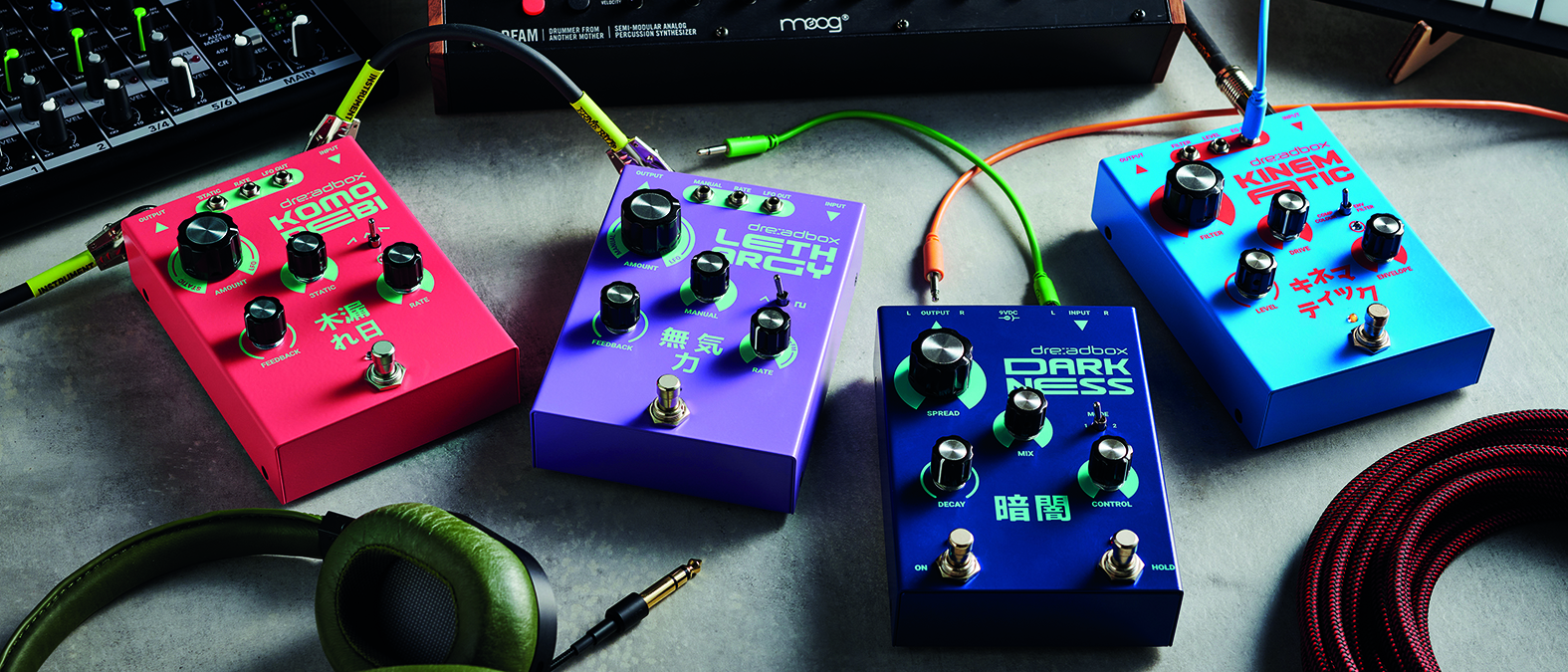MusicRadar Verdict
Dreadbox has created four pedals that straddle stompbox and modular synth worlds with class, and at a good price too.
Pros
- +
Wide ranges across all parameters for maximum creativity.
- +
CV inputs and outputs for more flexible modular/synth/pedal setups.
- +
Simple control structure with plenty of space for hands-on playability.
Cons
- -
Darkness is a little noisy even in bypass.
- -
No CV for Darkness.
MusicRadar's got your back
Dreadbox effects pedals: What is it?
Dreadbox is expanding its range of synths (Nymphes and Typhon) and Eurorack modules with a set of five stompboxes, four of which are currently available.
All four pedals reviewed here share control layouts and three (all analogue) sport a trio of CV in/outs for integration into modular setups as well as with other CV capable pedals. The odd one out, Darkness, is a digital pitchshifting shimmer delay that features stereo I/O and processing.
The jacks are rear-mounted, good for desktop use, ie bunching them up close to maximise space and hands-on range. The enclosures are relatively light, but they’ll easily withstand the rigours of most players’ footwork when on the floor. The footswitches have been sensibly selected to be hand or (socked/bare) foot operable without too much force, which is essential for modular/desktop users.
On a final general note, the Dreadbox effects are powered by standard 9VDC centre negative supplies and do not offer a battery powering option.
Dreadbox Kinematic: Performance and verdict
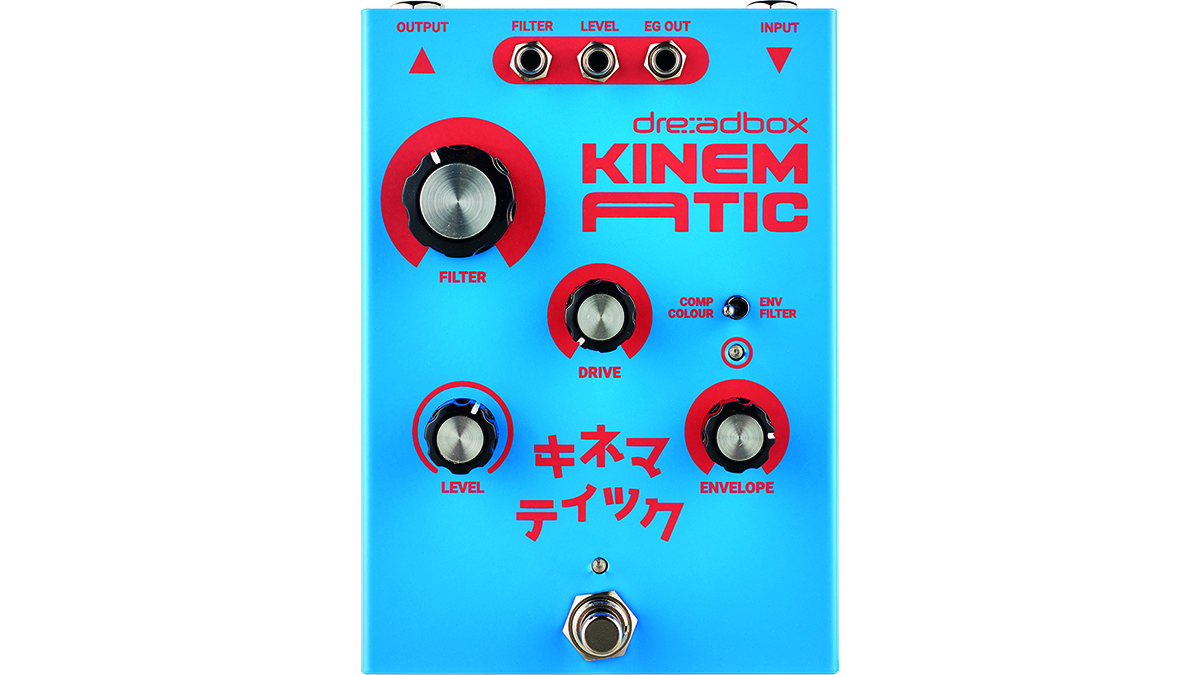
Kinematic is a band-boosting VCA compressor and envelope filter. The two modes are switchable above the Envelope knob, which is responsible for the ratio “factor” in compressor mode and auto-wah depth in envelope filter mode.
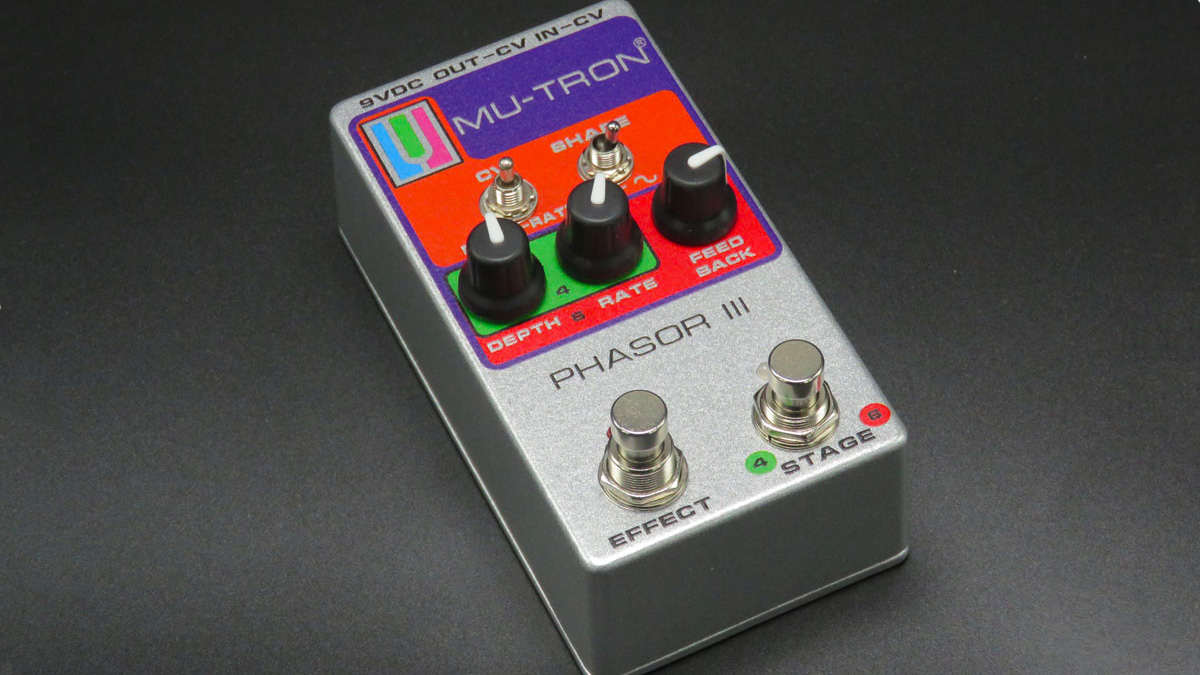
• Mu-Tron Phasor III
A modulation classic resurrected by Mr Mu-Tron, Mike Beigel. 4- and 6-stage phasing with a sine or square wave LFO and CV/expression I/O in a compact enclosure.
• Fairfield Circuitry Long Life
An oddity, much like the Kinematic, which combines a parametric EQ with a tilt and CV inputs to create tone-shaping and full on wah-filter stylings, and some zener diode soft clipping on the side.
• Chase Bliss Dark World
It may be mono but there are two reverbs to blend, one dark/shimmer style, the other a spring/plate/hall type. Flexible programming options with CV/expression input, plus MIDI.
In compressor mode, the band boost frequency range is wide, taking in everything from sub-bass to airy whistlings. Parking the Filter control at its lowest point keeps the band boost clear of most sources’ audible range, allowing the Kinematic to act solely as a compressor. For heavy bass it’s worth parking at the other end of the dial to avoid woofer blowing or distortion.
The compression effect can crush percussive sources to a pulp, but it’s also easily set to put a juicy squeeze on guitars, beats and bass. Bringing the Filter control into play can be shocking if unprepared for a heavy lift, especially in the low end, but with some lightness of touch it’s simple to lift part of an instrument’s range and then hammer it back down with compression.
Want all the hottest music and gear news, reviews, deals, features and more, direct to your inbox? Sign up here.
There is plenty of makeup gain to pull the flattened signal back off the floor, but Kinematic also has one more trick up its sleeve before breaking out the envelope filtering.
The Drive knob wheels in a diode clipping stage after the band boost/filter and compress stages. In small amounts, it will add bite to a drum line or growl to the front end of an attack-heavy synth, and as it’s rolled in, harder basses can bathe in a fuzzy glow while high guitar lines can get a little Isley lead magic.

Flipping to the envelope filter mode turns the compression into the shaper for a 12dB/oct lowpass filter. Instantly it’s a Bootsy world, and yes, Dreadbox is 100% correct in recommending this for bass guitar. Despite there being no resonance control, the filtering effect can be easily set to either tickle the highs or go full auto-wah. The speed is relatively slow so it won’t track a high tempo ‘wukka-wukka’ rhythm guitar part hit for hit. It does lather the source in... errr... sauce in a way not dissimilar to a Mutron III on its low-pass ‘up’ setting. The Filter control, again, has a healthy sweep range to allow for any number of tone-shaping duties.
The CV jacks provide external control of the Filter and Level parameters as well as sending out the envelope generator signal over a hefty 7V range. These enhance the Kinematic’s utility and creativity.
Dreadbox Komorebi: Performance and verdict
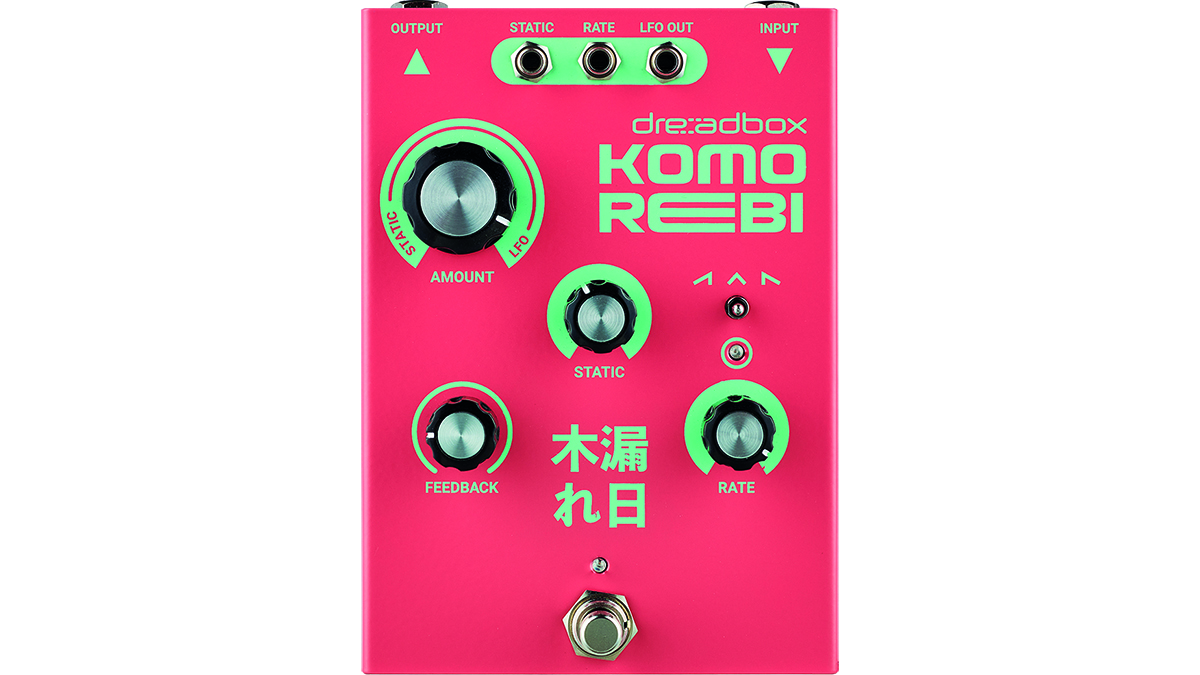
This analogue BBD flanger/chorus can sit still as a comb filter at one end of the Amount dial, whilst at the other its three waveform (ramp up/down and triangle) LFO is modulating the signal into extreme contortions. Between these two points is a rich field of yawing and chiming.
The Feedback control can as easily render the BBD into sharp metallic whines as it can deliver that extra depth to ring out the edges of the delays. The 40ms end of the delay range pushes the effect into the audibly echoic, and when served with subtly it can lift an instrument like a short reverb, but of course it can wreak havoc if that’s what suits.
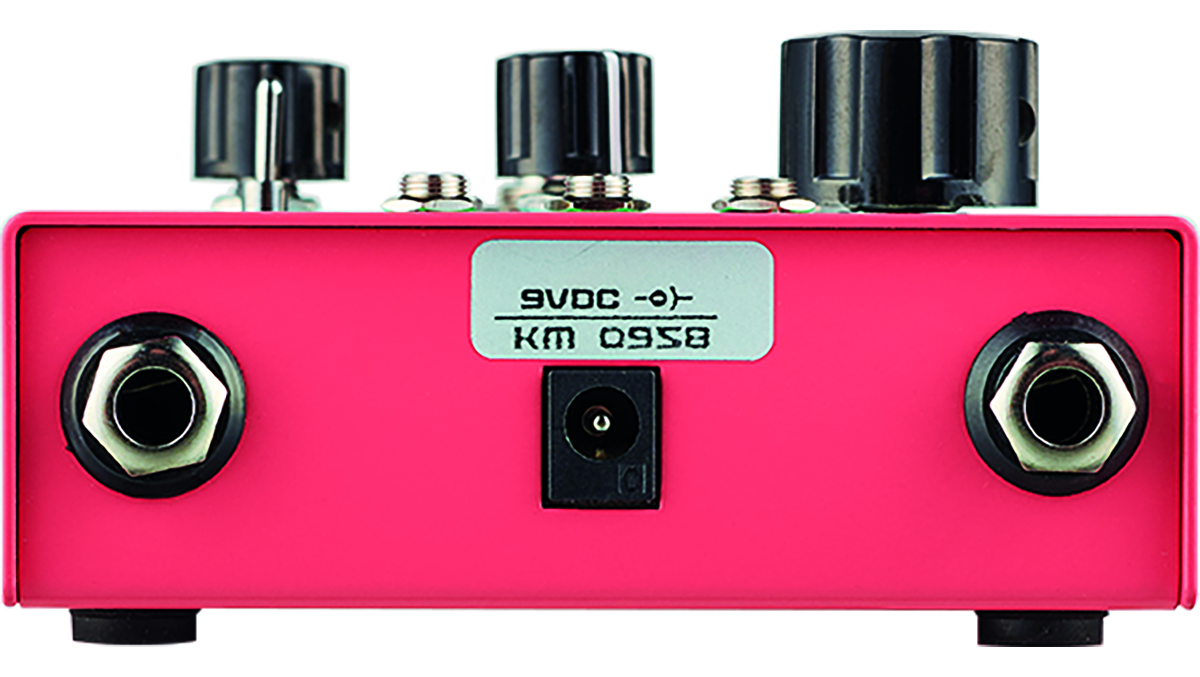
The LFO range is in the modular synth bracket allowing for anything from near-tectonic modulation rates to full on FM ringing and zinging. The CV inputs for the Static (delay time) and (LFO) Rate expand the Komorebi into a deeply useful and creative modulation effect. This doesn’t have to take the form of chaotic atonality; with care it can create complex choruses and rich flanges that will keep you coming back.
The triangle LFO waveform will probably do most of the heavy lifting, but ramp up and down settings can add pulsating modulations that can have their inevitable clicky sharp edge tempered by rolling back the Amount knob towards ‘Static’. Up in the FM range, the waveforms are worth jumping between to conjure different (in)harmonic tones. To ice the cake, Dreadbox has given users the LFO as a CV output for creating synchronised effects, providing LFOs where there are none (eg the Kinematic) and re-modulating itself.
Dreadbox Lethargy: Performance and verdict
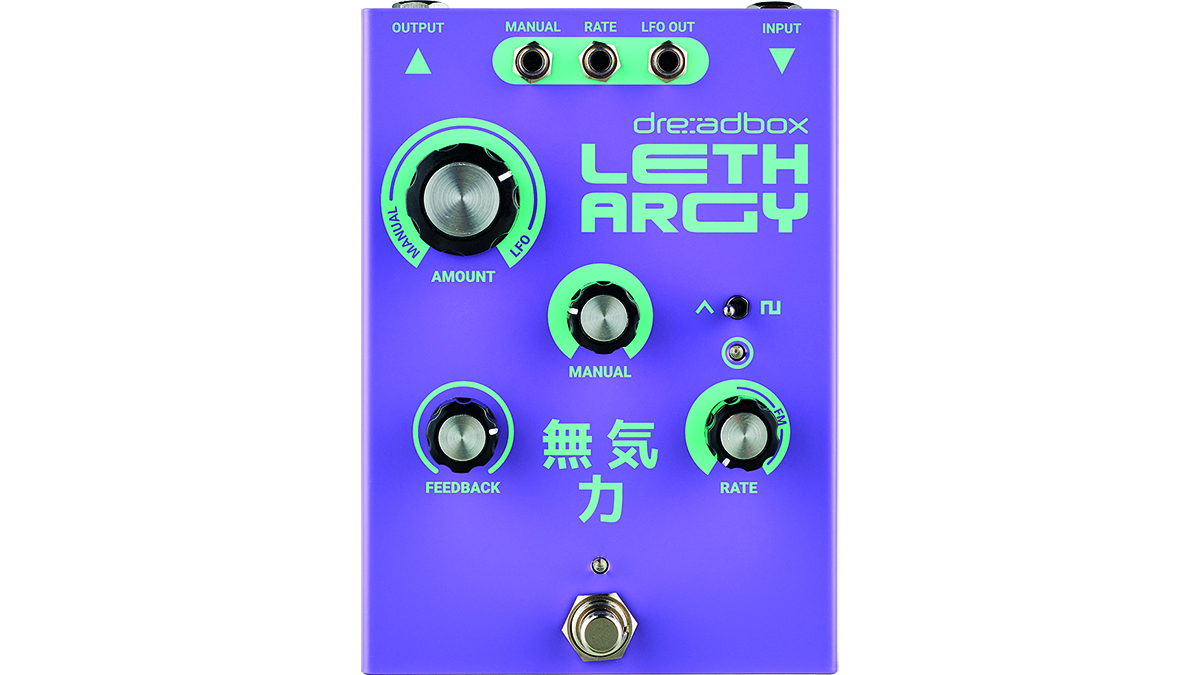
Providing the other modulation staple, phase shifting, is Lethargy, which is near identical in range and operation as Komorebi: swap the delay time for degrees of phase shift (Manual) and the ramp waveforms for a square wave. Of course it is a different effect and is possessed of its own character, but similarly this character is multifaceted.
With the LFO out of the picture you can handcrank the Manual and Feedback controls to notch the source’s tone in myriad ways, from the slight to the mighty. Winding up the Amount knob towards the LFO end slowly removes the effect of the Manual control, but between the two poles is a gorgeous realm of swishy phasing, providing the LFO isn’t racing away, with opportunity for hands-on adjustments to highlight phrases or rhythms.
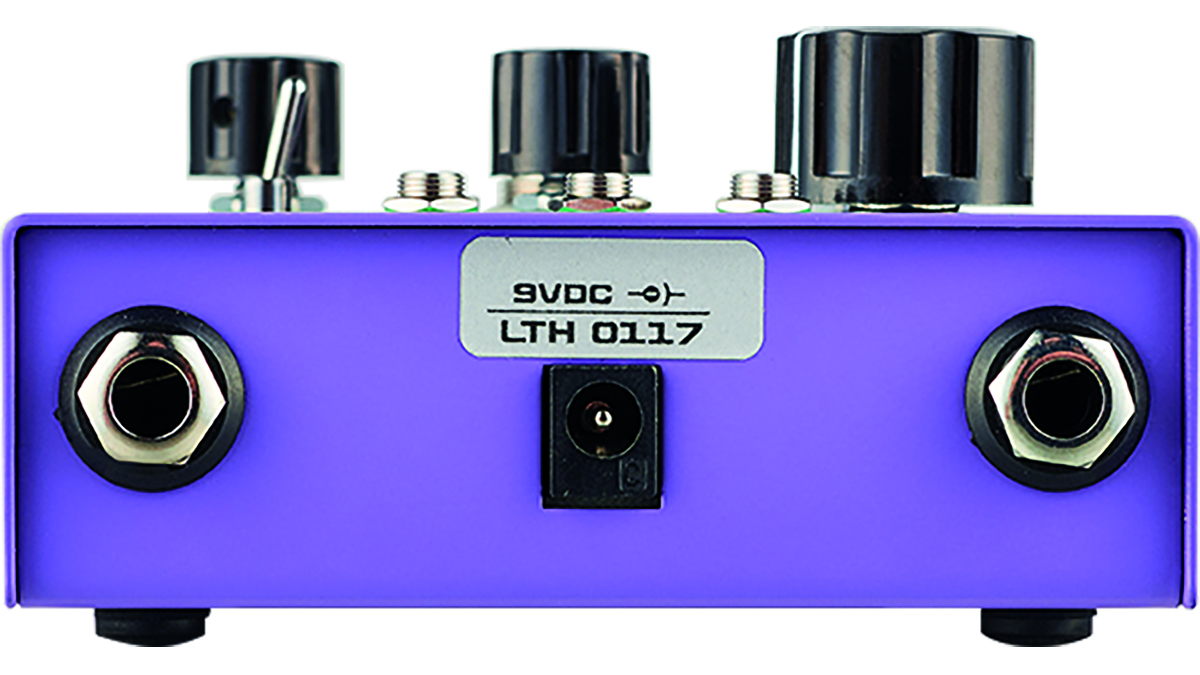
Lethargy is in fact an able machine that’s quick to veer from classic phasing into the hinterlands that obsess much of the modular synthesis community. It can do psychedelic for days, but kicking in the square wave LFO and spinning it up to the FM end allows it to go fully ‘bad trip’. As the manual says, it does get clicky with the square wave so it may spend less time in this mode but it’s not to be underestimated, especially when dealing with rhythmic sources or overtly distorted ones, as clicks are easily lost in a sea of inharmonic crackling.
Loads of rich modulation, capable of satisfying the experimental mentality
The OTA-based, eight-stage phasing delivers the throaty, vocal gurgling that can give the most pedestrian guitar chops a funky swagger, and this alone makes Lethargy an impressive phase shifter. Adding in the hyped up LFO range, the CV inputs (Manual and LFO Rate), the slightly hair-raising Feedback control range (careful what you dial) and the ability to spin the LFO back into itself, provides a tool far more powerful than the average phaser. This is the ground where old school pedals and the new(ish) modular synth aesthetic meet; loads of rich modulation amped up into something capable of satisfying the experimental mentality.
Dreadbox Darkness: Performance and verdict
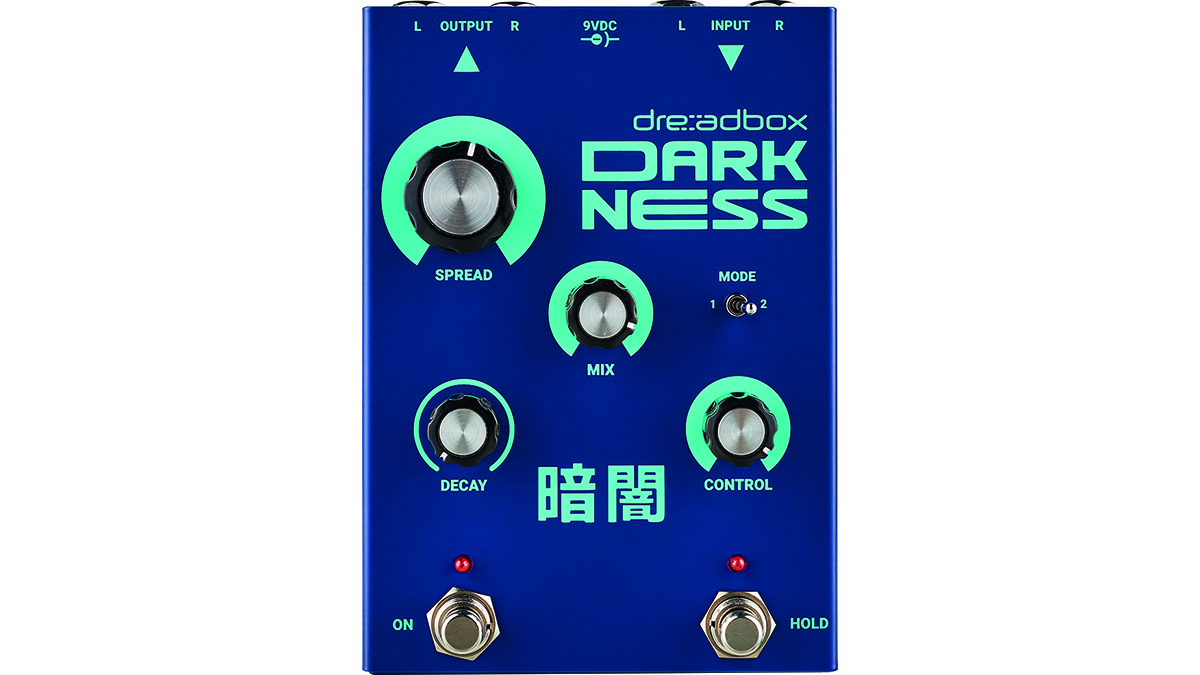
It’s important to note that despite its title this stereo digital reverb is not perpetually dark, it can just go there if necessary. The ±12 semitones of pitchshifting can take the mood to a lightless place as much as it can produce a fully optimistic shimmer and shine. The fundamental reverb, a pair of Sinevibes algorithms, are controlled by the Spread and Decay pots, and these set the size and length of the reverb. In the middle, the Mix knob does exactly what you’d expect.
So far, so simple. Things start to wander into more esoteric territory with the Control pot and its associated Mode switch which toggles between its two uses. Initially this means the pitchshift and the mix of the pitchshifted signal. With this set of parameters at your fingertips, Darkness produces reverberations of a distinctly non-real, or maybe hyper-real, quality. It is not a smooth diffuse sound, although it’s not rough either. The spaces it creates can be as musical as they can be dissonant, depending on how much pitchshifting is applied. Huge, cavernous spaces can be built up and fed as pad sounds of their own, but at the shorter end Darkness can give depth and space to dry instruments, especially percussive ones.
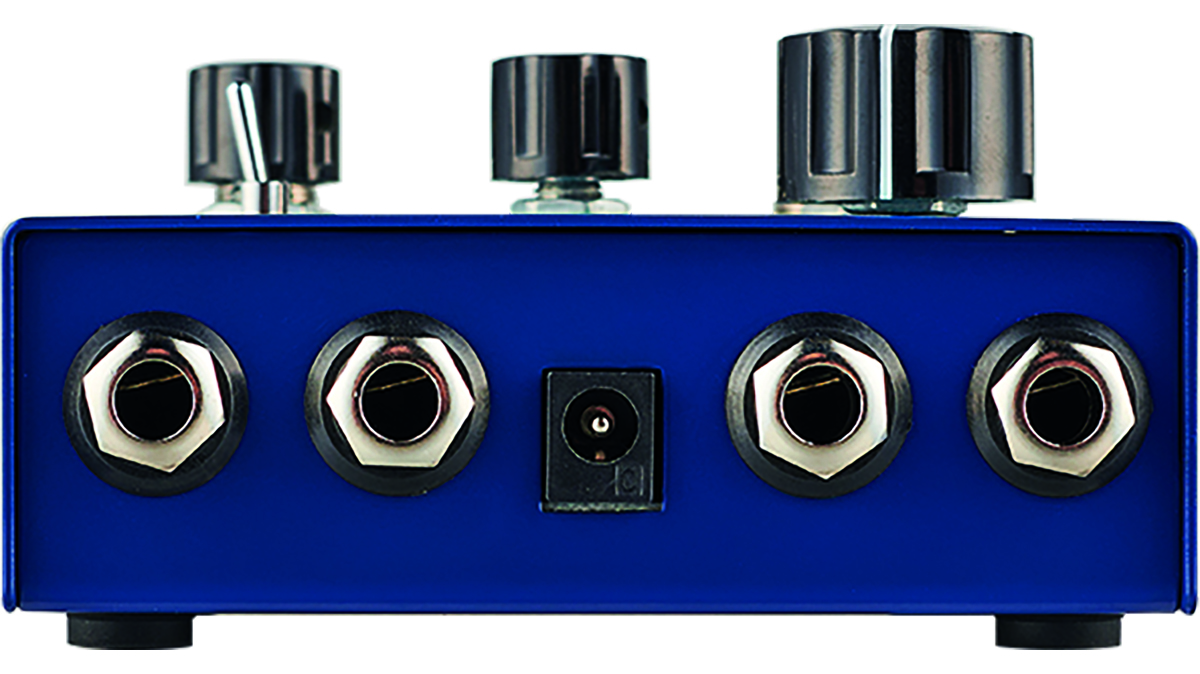
Darkness is actually three layers of controls with ‘pages’ two and three accessed by holding either the On or Hold footswitches. The second page carries parameters for the reverb filter (LPF and HPF), an LFO for wobbling the reverb and a tails on/off option for bypassing. The third page brings in gating with threshold, attack and release settings.
This latter page spins Darkness off into something far more playable or reactive, though with this comes the potential for barely controllable spluttering, which may be your aim, who knows?! Massive reverbs can be tucked back from the start of notes and phrases, and long tails can be chopped back without sacrificing the fast build-up intensity of ramping the Decay knob. For percussive or staccato instruments this can be dialled in as something more akin to a delay.
Darkness is a little noisy, even when bypassed, so it may need to have a full bypass in a pedalboard context, especially if followed by compression and overdriving gain stages. When it’s doing its job the noise is not an issue, and in a modular synth setup it’ll fit right in.
This is an effect for the experimental, the curious and those who don’t want another faithful recreation of a Lexicon 480L. This is a thoroughly modern granular pitchshifting reverberator that sounds otherworldly, with a depth of control that will be hard to exhaust in a hurry.
Dreadbox effects pedals: Performance and verdict
There’s a great sense of purpose across the first four of this new pedal range, so roll on the release of no.5, Raindrops, a stereo delay. The new releases bolster Dreadbox’s experimental credentials, with each model offering the user/player the opportunity to take an essential process, be it compression, flanging or reverberation, and spin it into something more arresting. They come at a price that balances affordability with a lack of obvious compromise in build and sonic quality. Bravo!
MusicRadar verdict: Dreadbox has created four pedals that straddle stompbox and modular synth worlds with class, and at a good price too.
Dreadbox effects pedals: Hands-on demos
Dreadbox
Happy Mag
TheSuperFunAwesomeHappyTime Pedal Show
Dreadbox effects pedals: Specifications
- I/O: 6.35mm (1/4”) TS jack (audio), 3.5mm (1/8”) jack (CV), Digital Processing (Darkness only): 32bit 48kHz.
- BYPASS: CMOS buffered.
- CURRENT DRAW: 85mA (Kinematic), 100mA (Komorebi), 90mA (Lethargy), 150mA (Darkness).
- POWER: 9VDC centre negative, no battery operation.
- DIMENSIONS: 140 x 100 x 56mm.
- WEIGHT: 525g.
- PRICING: Komorebi and Lethargy, €160, Kinematic, €145, Darkness, €209 (All prices are ex.vat.).
- CONTACT: Dreadbox
